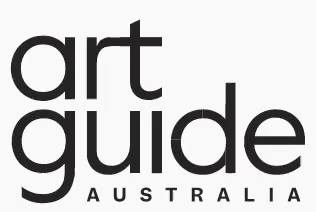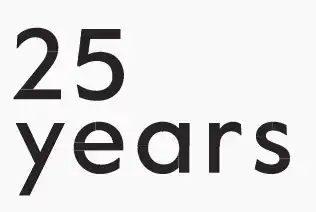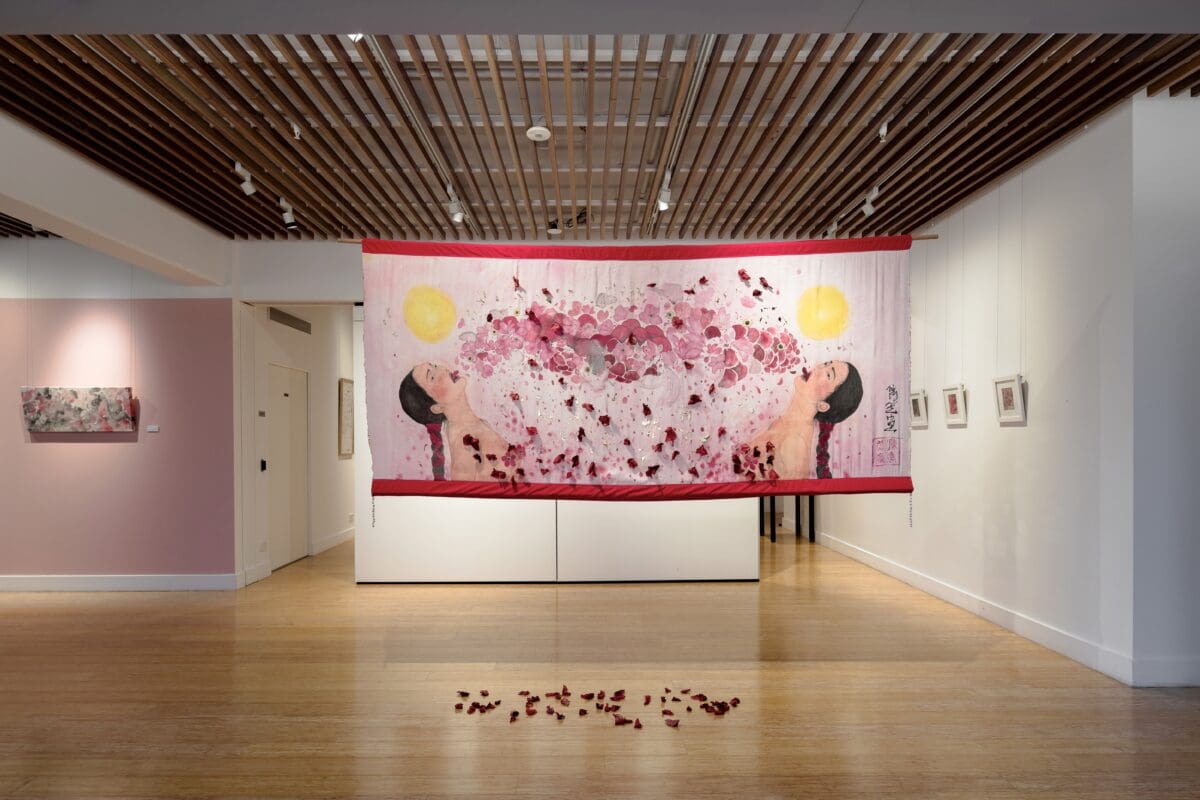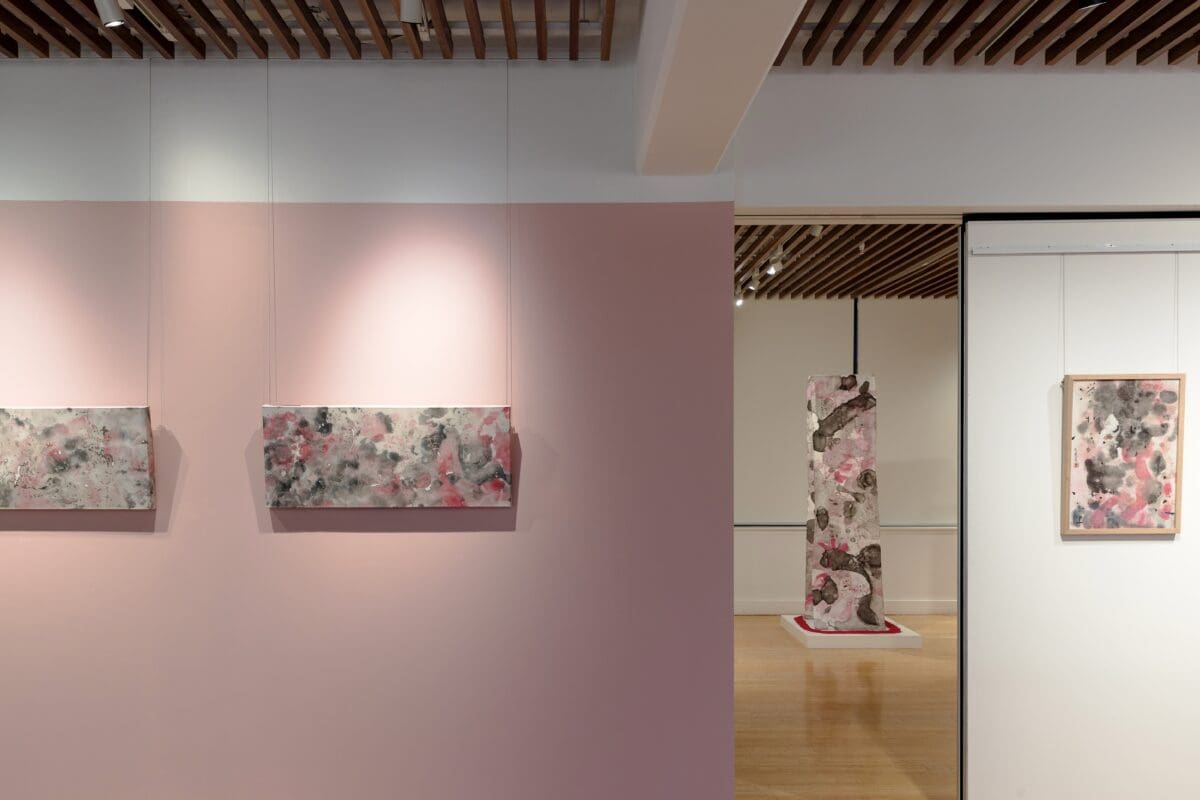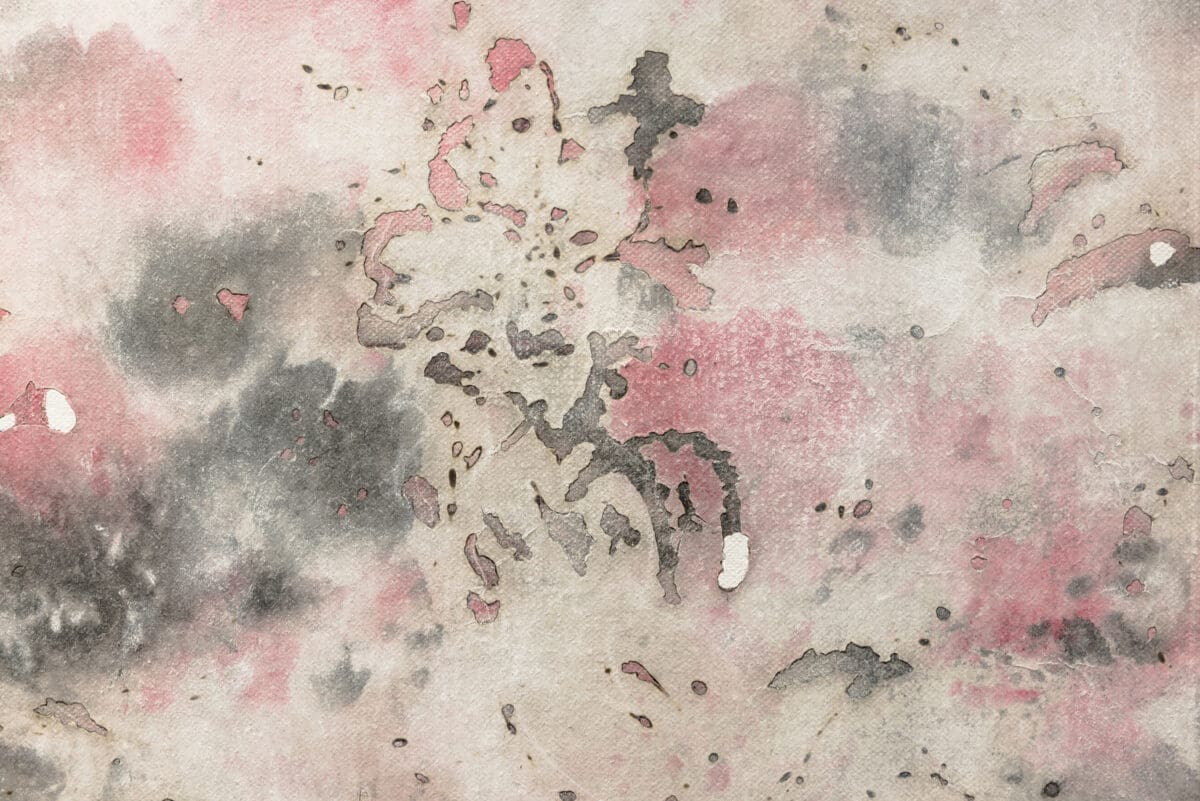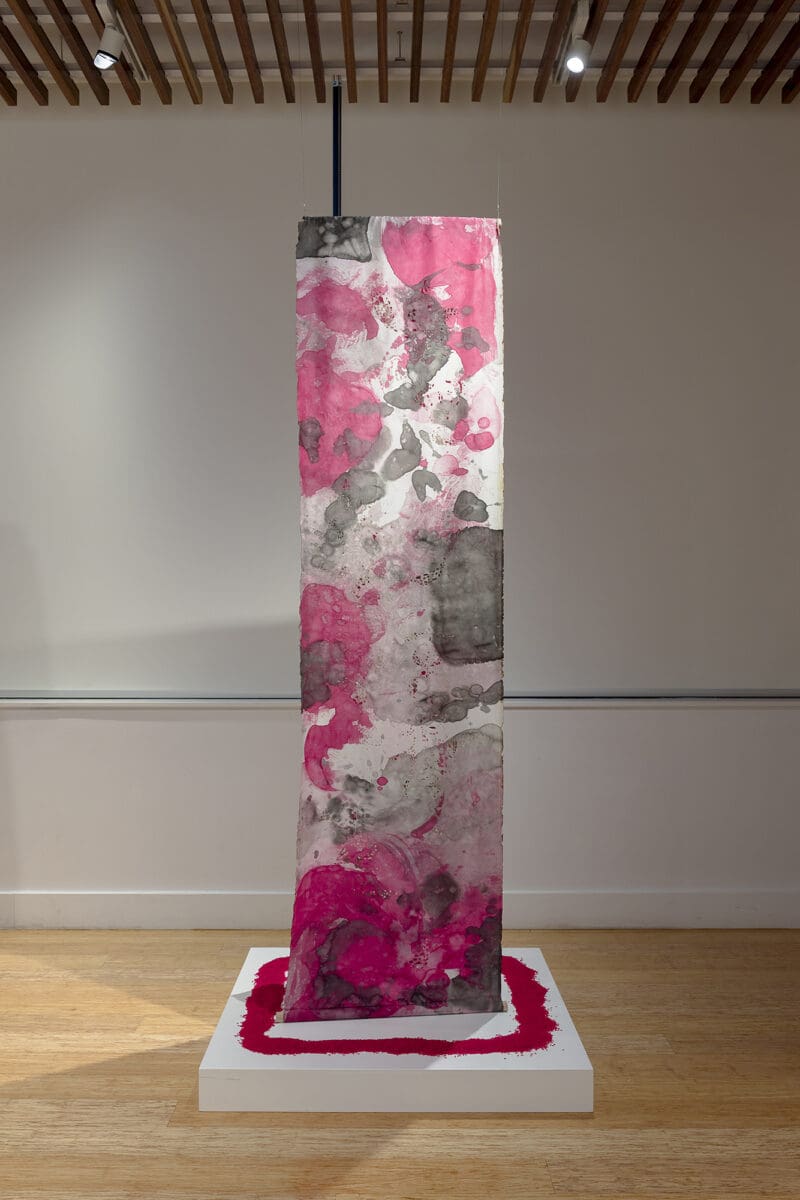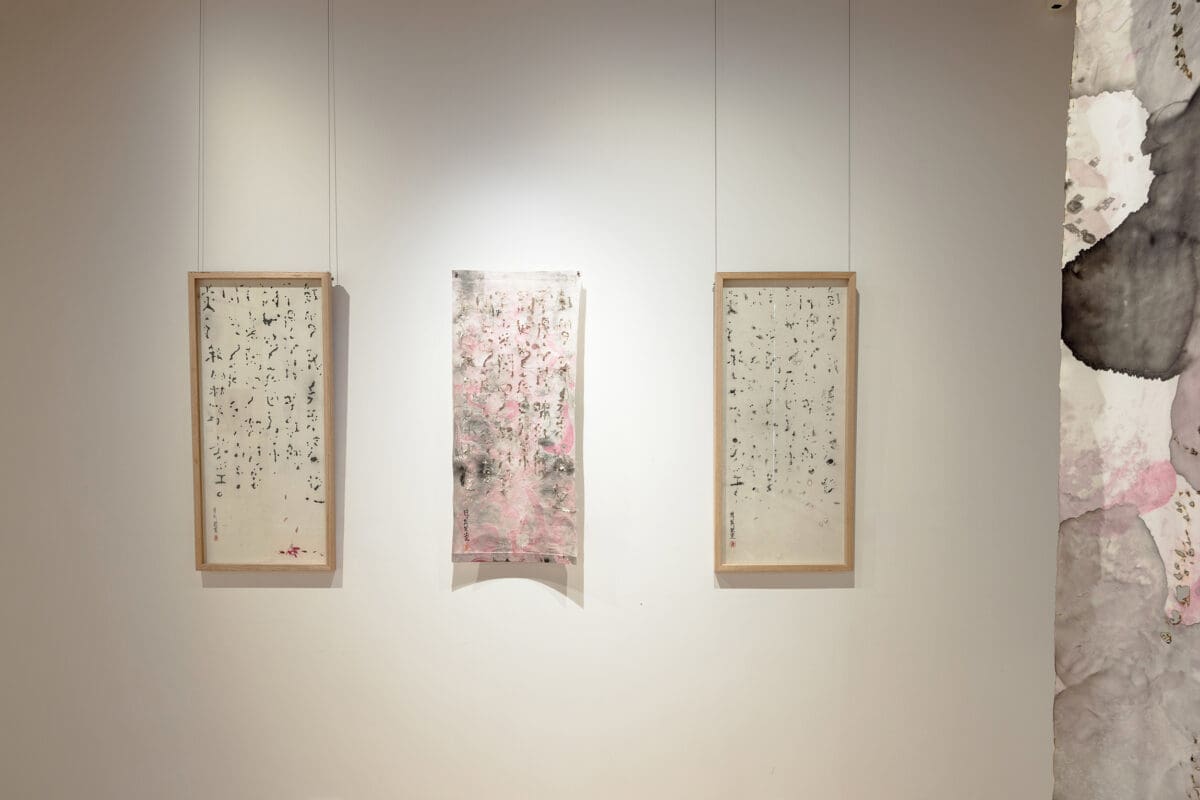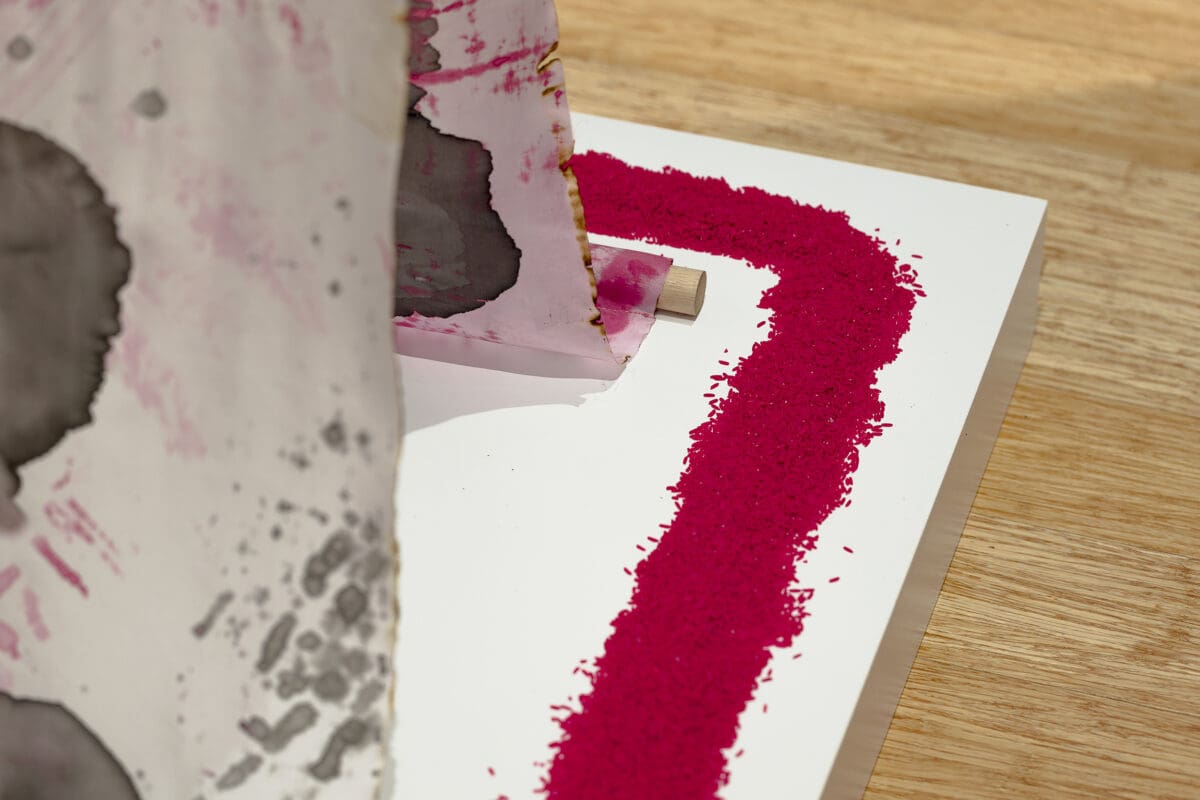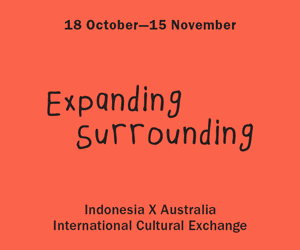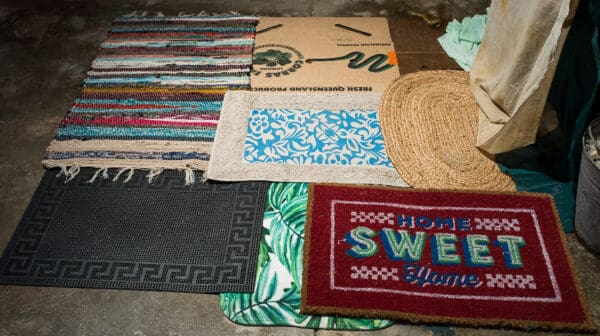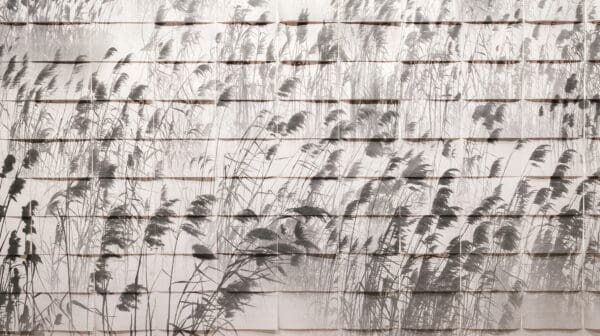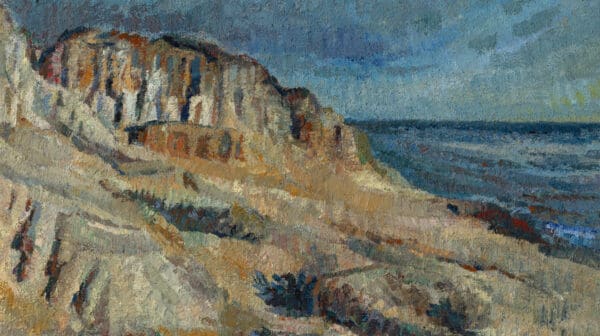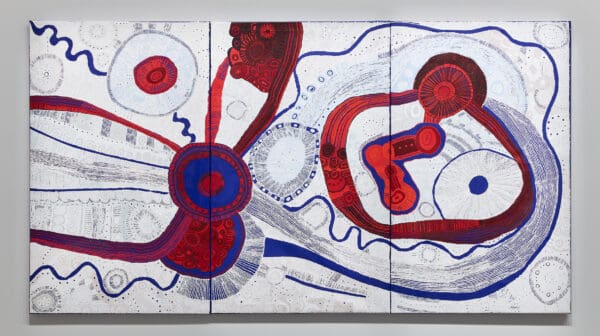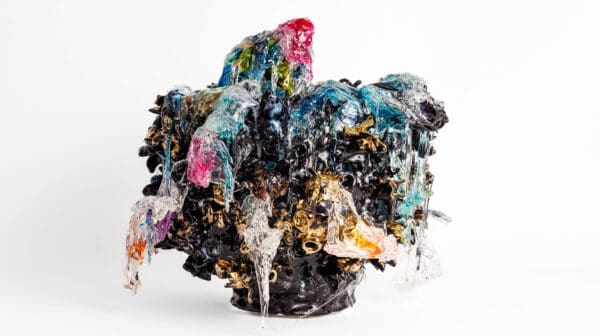Rainbow Chan’s Notations: Red Scale is a meditation on inheritance and translation. Drawing from the Weitou bridal laments of her mother’s village in Hong Kong’s New Territories, Chan re-animates an endangered matrilineal tradition through silk, paper and sound. Widely known for her interdisciplinary practice as an artist, vocalist and performer, this is Chan’s first institutional solo exhibition, presented at the Institute for Australian and Asian Arts and Culture at Western Sydney University.
The show forms a rich material collage that traces Chan’s lineage to Hong Kong’s first settlers, the Weitou people, and in particular amplifies the voices of Weitou women by reimagining the traditional bridal laments sung before marriage. The opening work, Opening the Mouth (Study) (2025), anchors the exhibition: a vivid acrylic and ink painting on xuan rice paper that visualises the bridal song of the same name, which likens the sunrise to red fish scales bursting through the sky. Two women bare their bodies and voices as they wail, their cries arcing across a pink horizon rendered in hundreds of vermilion scales. It is a plaintive and powerful threshold image that consecrates Chan’s notion of “the mouth as a vessel—a site of inheritance, rupture and abundance.”
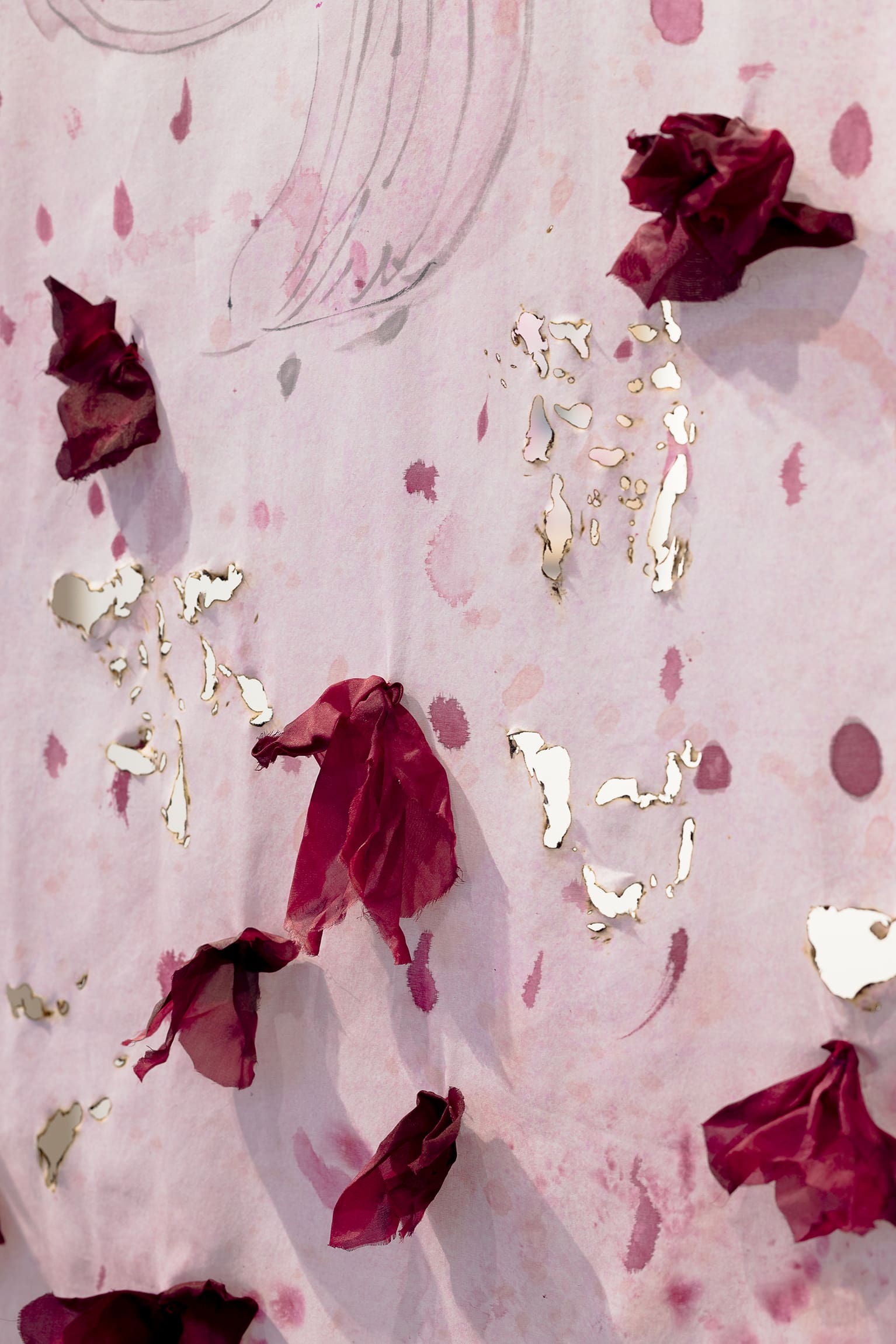
Across the exhibition, Chan draws on the reciprocal relationship between sound and image. “I sing the image and visualise the sound,” she says—a statement that might serve as a methodological motif for her entire show. In Recapitulations (Red Clouds 1) (2025), a series of gridded collages made from offcuts of earlier works, she mirrors her approach to music-making: remixing fragments, re-arranging rhythms, finding new melodies through re-composition. Distilling existing histories becomes both method and metaphor.
Her experimentation with materiality and calligraphy reworks inherited forms, turning patriarchal metaphors of cultivation and submission into gestures of resistance and renewal. The use of xuan paper recalls the song’s image of a girl as “wild grass” who, once married, becomes rice that nourishes the family. Chan subverts this by perforating the paper—an homage to silenced women that transforms absence into presence. She also dyes kernels of uncooked rice red, creating a distinctly feminine visual language. The silk used across several works carries multifaceted symbolism as a sensory crossing from girlhood into marriage but also as a token of liberation, as the silk industry once offered women rare financial independence, enabling some to avoid arranged marriages.
In Hollow Script 1 (2025), Chan transcribes the lyrics of the song, Opening the Mouth (Year) in calligraphy, but replaces the brush with a burning incense stick. The substitution disrupts the male literati tradition, leaving behind singed marks that merge writing, ritual and performance. Once again, presence is revealed through absence, and attention is drawn to the endangered Weitou language, now spoken by only around 18,000 people worldwide.
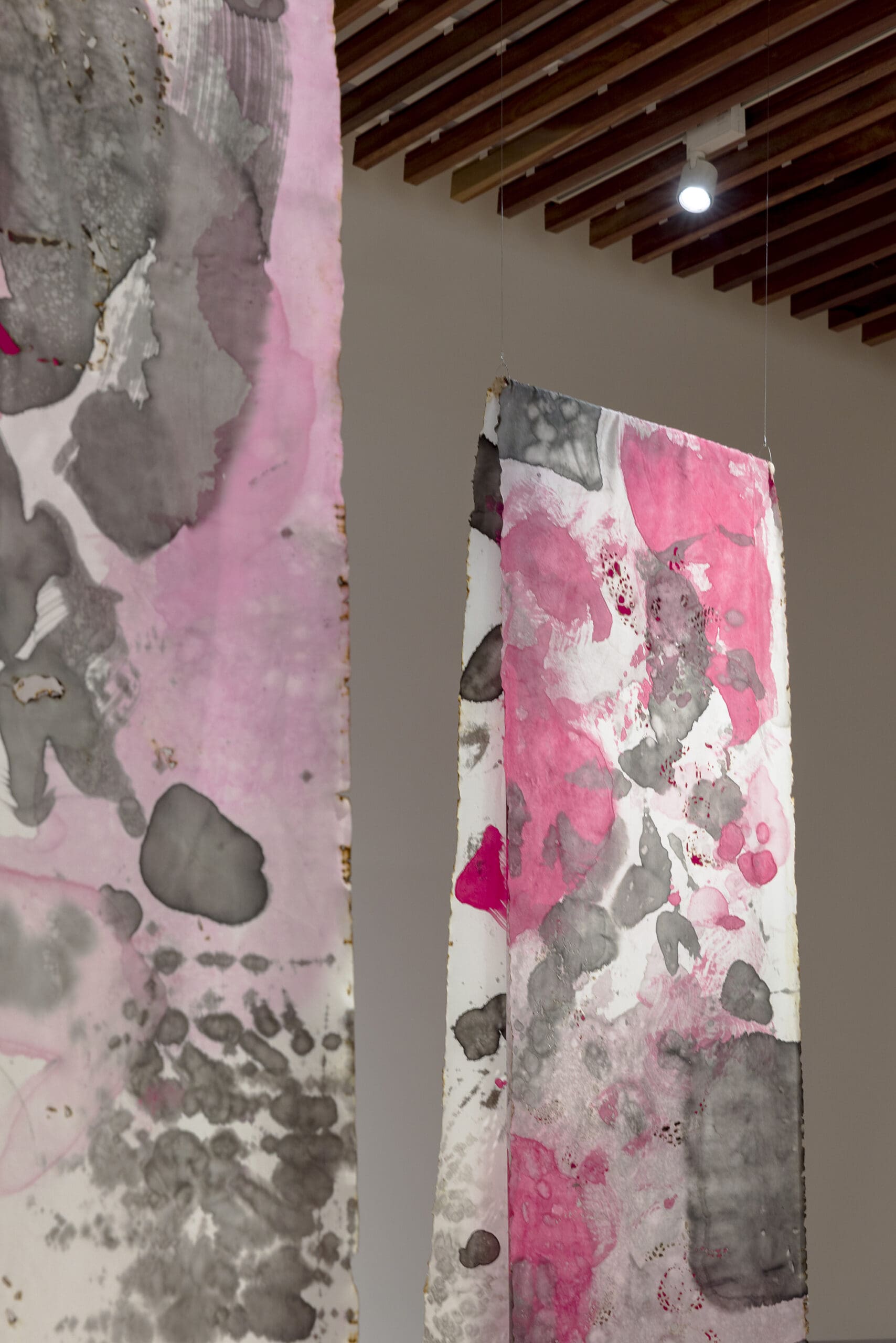
Notations: Red Scale extends from Chan’s ongoing inquiry into Weitou culture, first explored in her 2022 live music work The Bridal Lament. Inspired by her mother, a descendant of the Weitou clan, Chan has been researching the community since 2018, when she visited the village of Lung Yeuk Tau where preservation efforts are centred. She speaks warmly of the “grannies” she has befriended over the years and the growing global reach of the project.
“It’s a dialogue that’s so much bigger than me,” she says. “Descendants have found my work and reached out to tell me about their own family connections.”
In Twin Melody for Music Box (Flowers) (2025), visitors feed strips of layered, hand-punched xuan paper through a miniature music box. The delicate paper, marked with floral patterns from Weitou temples, generates a fragile tune—an intimate fusion of image, sound and touch. The work embodies Chan’s interdisciplinary spirit, her commitment to translating traditional forms into new sensorial vocabularies.
Ultimately, Notations: Red Scale speaks to the power of diaspora art to re-animate existing histories in new light—to translate inherited memory into contemporary forms, and to keep the hum of language, ritual and kinship alive in the present. Yet its strength also lies in relation: the work’s full depth emerges when read within Chan’s broader practice and ongoing research into Weitou culture. Seen in isolation, its fragments may seem elusive; viewed in context, they form part of a living, expanding conversation.
Rainbow Chan
Notations: Red Scale
Institute for Australian and Asian Arts and Culture (IAC), Western Sydney University
(Sydney/Burramattagal Country NSW)
On now—20 February 2026


